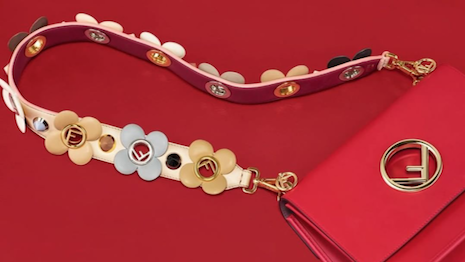 Farfetch recently launched its IPO. Image credit: Farfetch
Farfetch recently launched its IPO. Image credit: Farfetch
HONG KONG – As consumers of luxury goods change their shopping habits, sales of high-end fashion are primed for steady growth as retailers continue to embrace ecommerce.
In a keynote at The New York Times International Luxury Conference on Nov. 13, the founder of Farfetch noted that as consumers are tending to move away from ownership of big-budget items such as cars and homes, they are left with more disposable income for luxury fashion apparel. Shoppers are also growing more accustomed to a multi-brand way of retail, offering another opportunity for the online platform.
“The luxury market is such a massive market, and so under-penetrated online," said José Neves, founder and CEO at Farfetch, London. "Only 9 percent of sales happen online, and it’s a $100 billion opportunity.”
Farfetch and China
Fashion labels including Burberry, Chanel and Gucci have enlisted Farfetch and its technology to better reach younger, more digitally oriented shoppers.
With ecommerce poised to be the third largest luxury market in the coming decade, retailers need to keep consumers as the focal point of their efforts. Online sales of luxury goods have been on the rise and the expectation is that the global ecommerce market will only be outpaced by China and the United States (see story).
Farfetch is hoping to help western brands open WeChat boutiques in China. Image credit: Farfetch
Chinese ecommerce sales have surpassed $1 trillion for the first time, with no signs of sales or growth slowing down for the world's largest digital retail market.
The Chinese ecommerce market must be of increasing importance to luxury retailers as it continues to pull away from the United States in terms of value. According to Digital Commerce 360, in 2017 online purchases by Chinese consumers reached $1.12 trillion, or 7.18 trillion yuan at current exchange, a 32 percent jump from 2016's $869 billion in sales (see story).
Farfetch is expanding its presence in this valuable market with the acquisition of CuriosityChina, a Chinese digital marketing agency.
In doing so, Farfetch is looking to smooth the sales of luxury brands' goods in China through popular ecommerce and social platform WeChat. China has become one of the premier markets for luxury brands in recent years, and WeChat has often acted as the gateway for Western brands looking to penetrate the market (see story).
Farfetch founder José Neves. Image credit: C.K. Man for The New York Times
"WeChat is the platform for the luxury industry," Mr. Neves said. "What Instagram is in the West, WeChat is in China, but even more so.
"They’ve created an amazing ecosystem," he said. "For me, from the perspective of a brand, the first and foremost platform to have a presence in China is with WeChat."
Farfetch growth
Farfetch began trading on the New York Stock Exchange this September.
Ahead of its initial public offering, the online retailer set its share price at $20. Farfetch’s IPO included about 33 million shares from its own company, as well as more than 10 million shares being sold by existing investors (see story).
Farfetch also took a major step into the world of hard luxury with the launch of two new online hubs partnering with some of the biggest brands in jewelry.
Fine jewelry and fine watches will each now have their own separate hubs online on Farfetch’s platform. Jewelers from Chopard to Tiffany & Co. to David Yurman will be represented on Farfetch for the first time, bringing some of the biggest names in luxury jewelry together in one online marketplace (see story).
Over the course of a decade, Farfetch has become an online destination for affluent shoppers hoping to purchase multiple brands, products and styles in one place.
"We’re very focused on capturing as much market share as possible," Mr. Neves said. "We’re an ambitious company…We grow as fast as we can."


